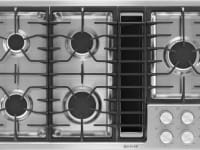Ask the Experts: Why do microwaves open right to left?
The fate of your kitchen design hinges on the answer.
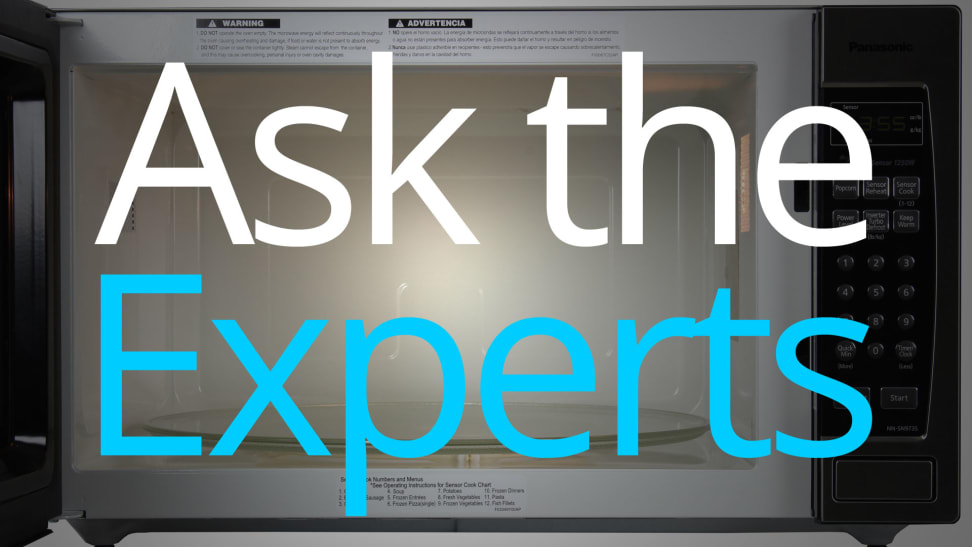 Credit:
Reviewed.com / Jeremy Stamas
Credit:
Reviewed.com / Jeremy Stamas
Products are chosen independently by our editors. Purchases made through our links may earn us a commission.
At Reviewed.com, our team of expert reviewers has a wealth of knowledge that you can lean on. If you have a question about electronics, appliances, or virtually anything else you can buy, send an email to [email protected]. We can’t answer your etiquette questions or help you find love, but we can make you a more educated consumer.
This week, we're tackling issues of finicky fits and problematic placements. From doors that open the wrong way to old-fashioned laundry rooms that won’t fit a modern machine, we help our readers out of some tight spots.
Why do microwaves discriminate against lefties?
Reader Linda asked a question that’s baffled me for some time now:
“Why can't you buy a microwave oven where the door opens from left to right?”
Indeed, a quick search of all the microwaves currently on sale yields not a single right-hinged microwave, which is annoying for lefties—and folks in cramped kitchens where the microwave sits flush against the right wall. Washers, dryers, and refrigerators can all have their doors reversed. Why not microwaves?
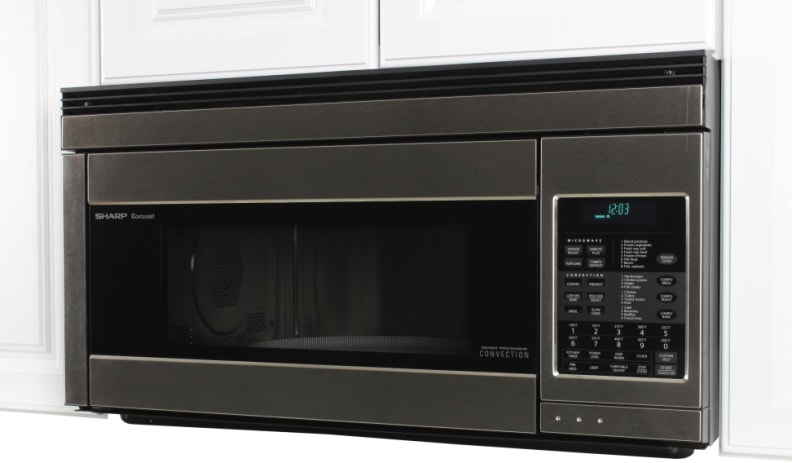
No surprise: this microwave has controls on the right, hinges on the left.
I reached out to my contacts in the appliance industry, searching for answers. Unfortunately, I was left with even more questions. Had a Big Hinge Conspiracy closed the door on all alternative openings?
Representatives from Galanz, the manufacturer that actually builds most of the microwaves sold under big brand names, did not respond to my requests for comment. But I did get in touch with two people who helped to shed some light on the situation.
A few years back, Kenmore briefly made a reversible hinge model—the 88523—but it quickly went out of production. “We carried the unit and did not see the sales results we anticipated,” a product manager at Kenmore told me. “That could explain why you don’t see right-hinged units. We are not planning for a replacement.”
Robert McKechnie, manager of new product development for Electrolux and Frigidaire, told me that microwave ovens were originally designed to match side-open ovens, which were hinged on the left for ease of use by right-handed cooks. The tradition stuck around even with countertop and over-the-range models.
“When a standard convention is started, it tends to stay in place even for sometimes unrelated products,” he said.
In addition, a reversible or right-open hinge would require major changes to an established assembly line.
“One thing to keep in mind is that providing two opening styles for microwaves means two chassis designs for one product offering, which introduces some level of complexity into a manufacturing situation—which may be another reason for the existence of almost entirely left-side-hinged doors,” McKechnie said.
A few Samsung countertop models are hinged from the bottom like a breadbox, and Sharp is known for making pull-out microwave drawers. But it looks like right-hinge microwaves will only happen if an enterprising small manufacturer decides to make a conversion kit for existing products. (I’m looking at you, FirstBuild!)
New washer, same old laundry room
On to the laundry room, where reader Ryan asked a question with some depth to it. He lives in a house with a small laundry room, and today’s high-capacity front-load washers and matching dryers just won’t fit in his space. He could buy a cheaper, shallower laundry pair—but they lack some of the features he’s interested in.
Good news, Ryan: There are a few options out there for you, as long as you have about 33 inches of depth.
LG’s 27-inch wide WM3170CW, WM3370HWA, WM3570HWA, WM4270HWA, and WM3670HXA washers are all 29.75 inches deep. With four inches of clearance for drain lines and water, that means they can be installed in a laundry room that’s just 33.75 inches deep.
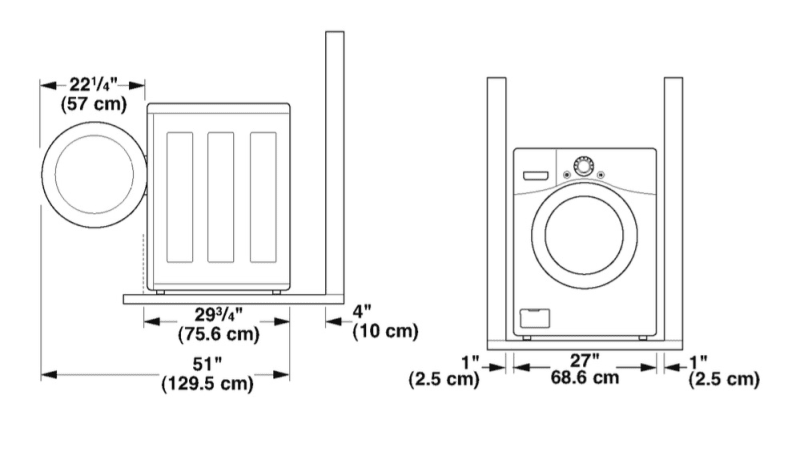
Your washing machine requires some additional clearance in your laundry room.
Whirlpool just started selling two new “closet-depth” washers—the WFW7590FW and WFW9290FW. These 4.2 cu. ft. models are 31.5 inches deep and have all the features of the latest top loaders, but—according to Whirlpool—require just 33 inches of depth, total. Compare that with existing machines that themselves are a hair over 33 inches deep, not counting additional clearance for water and drain lines.
Depending on what your budget allows and what features you need, we’d happily recommend any of these machines. LG’s midrange front-load models are excellent across the board, and we love the speedy TurboWash cycle. The Whirlpool WFW7590FW sells for under $600, while the WFW9290FW sports an automatic detergent dispenser and a fan that can dry a small load of clothes in the washer.
Finally, staying on the subject of dimensions, multiple readers want a counter-depth fridge, but can’t understand why it’s so hard to find an affordable one that fits.
How deep is counter depth?
Pam took issue with naming conventions:
“I’m looking for a refrigerator that is genuinely cabinet depth—i.e. about 24" deep.”
And Diane has similar complaints:
“Counter-depth units are both expensive and take up linear feet to make up the cubic feet of standard-depth units.”
In general, counter-depth refrigerators are shallower than their full-size counterparts so that they won’t stick out from cabinetry and counters. The only problem? There's no standard depth for "counter-depth": GE sells some counter-depth models that are just over 29 inches deep without handles, while the LG Studio LSFXC2476S is the shallowest we found at a svelte 25.375 inches deep.
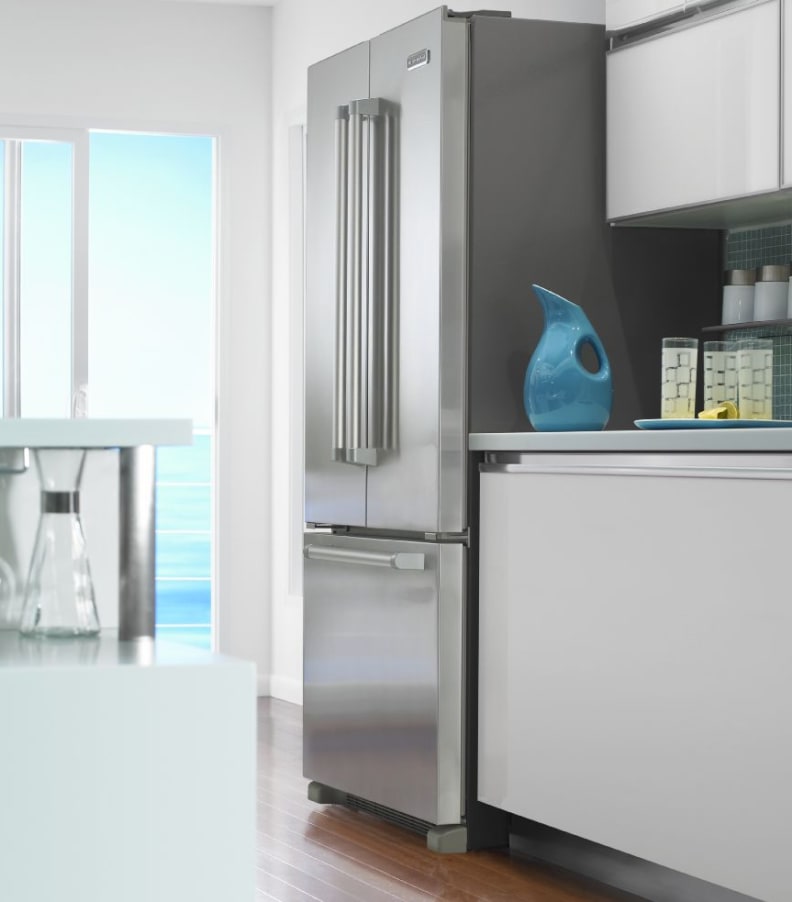
See how good this KitchenAid fridge looks? That's because it's counter-depth. A standard-depth model would stick out a few more inches.
The only 24-inch models available are either truly built-in (more expensive, but totally flush with cabinetry) or narrower apartment-size models from European brands like Blomberg and Liebherr. Another option is Haier’s new HRF15N3AGS, a French-door model that's just 26.5 inches deep, including doors and handles.
Unfortunately, counter-depth fridges tend to cost more than standard-depth models due to the basic laws of the free market. Manufacturers know that a customer who's persnickety enough to demand a counter-depth fridge is likely willing to pay a premium for it. On top of that, counter-depth fridges simply don’t sell in huge volume, and usually require specialized production methods.
Related Video
{{ brightcove '4812296144001' }}

